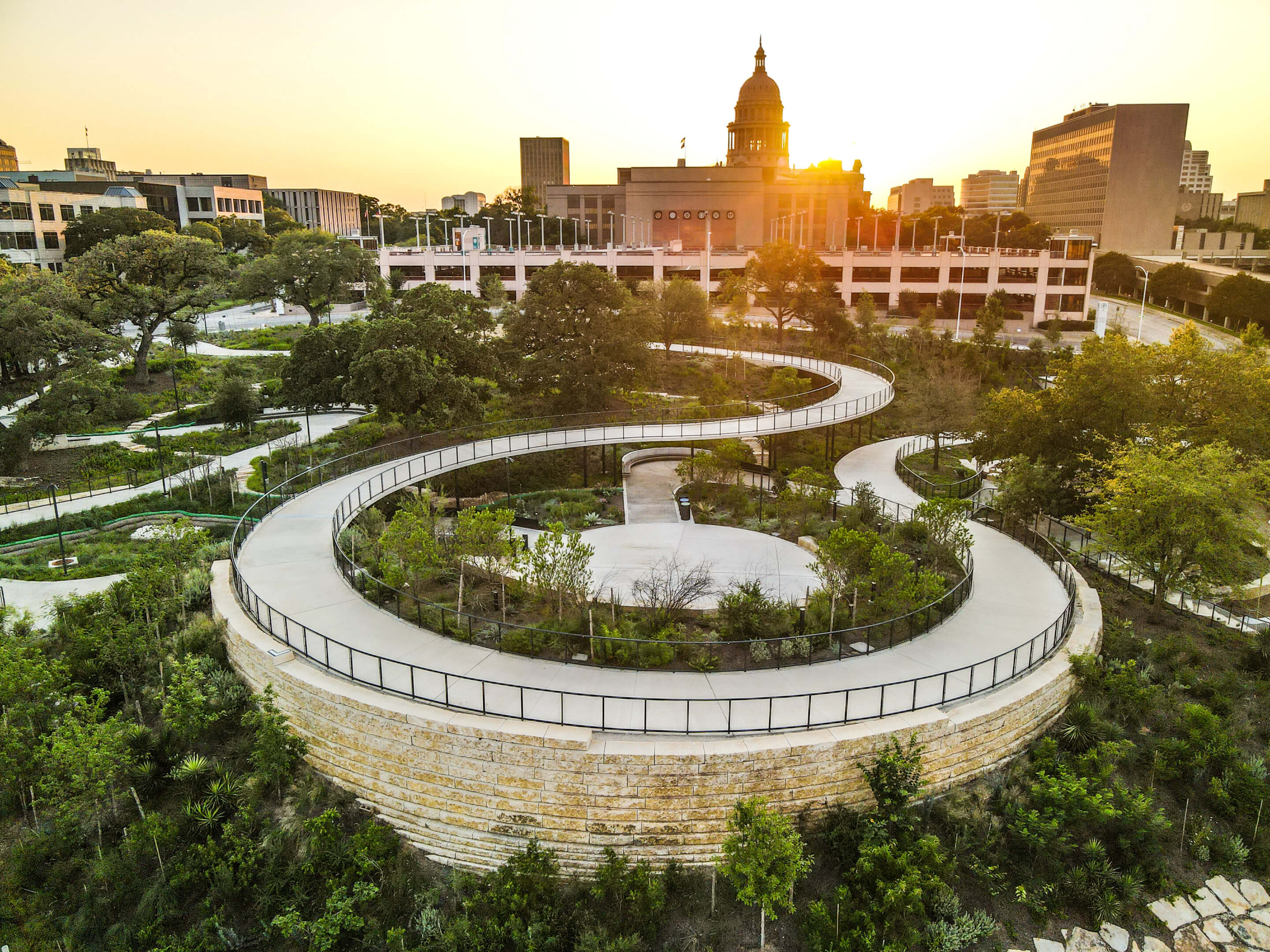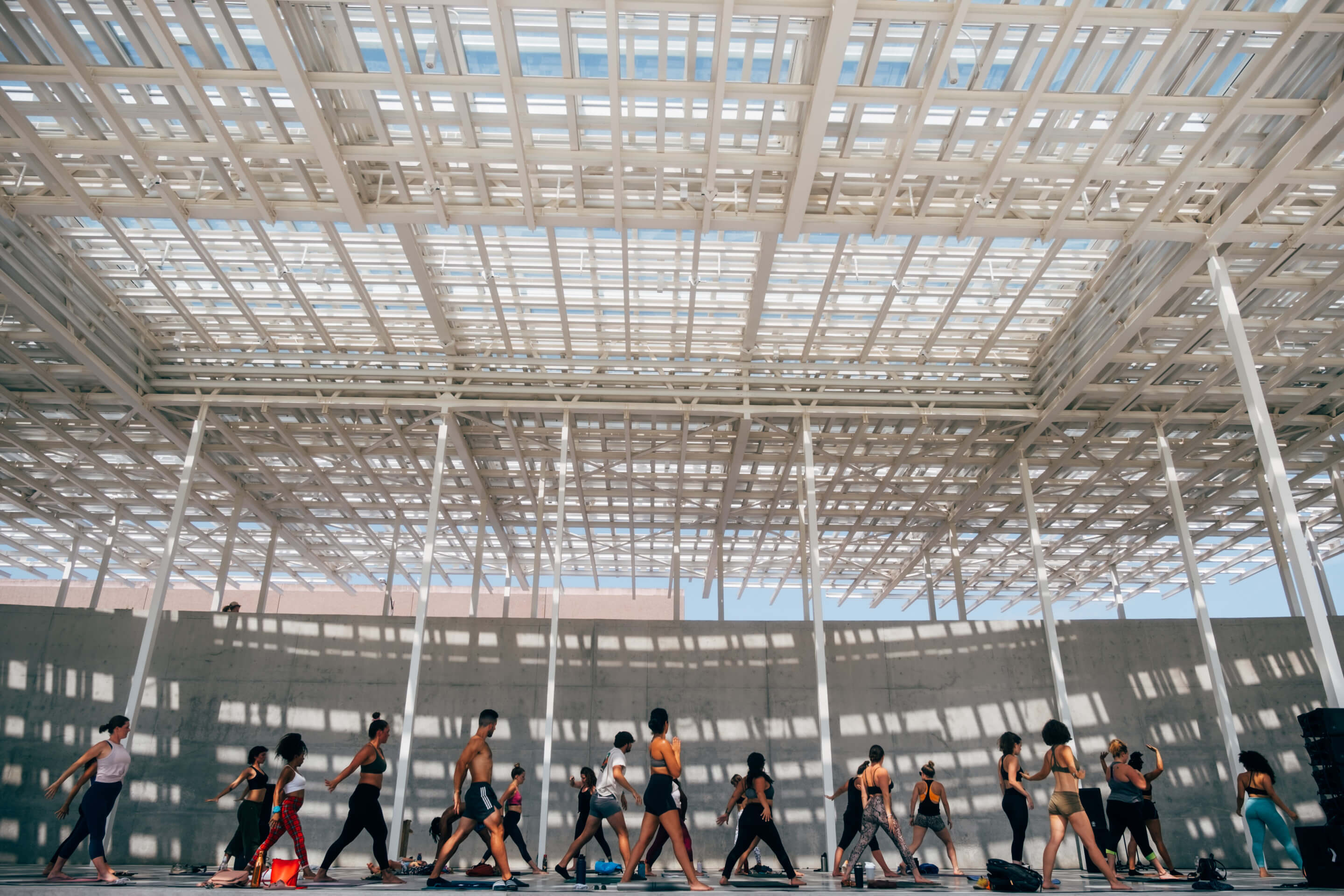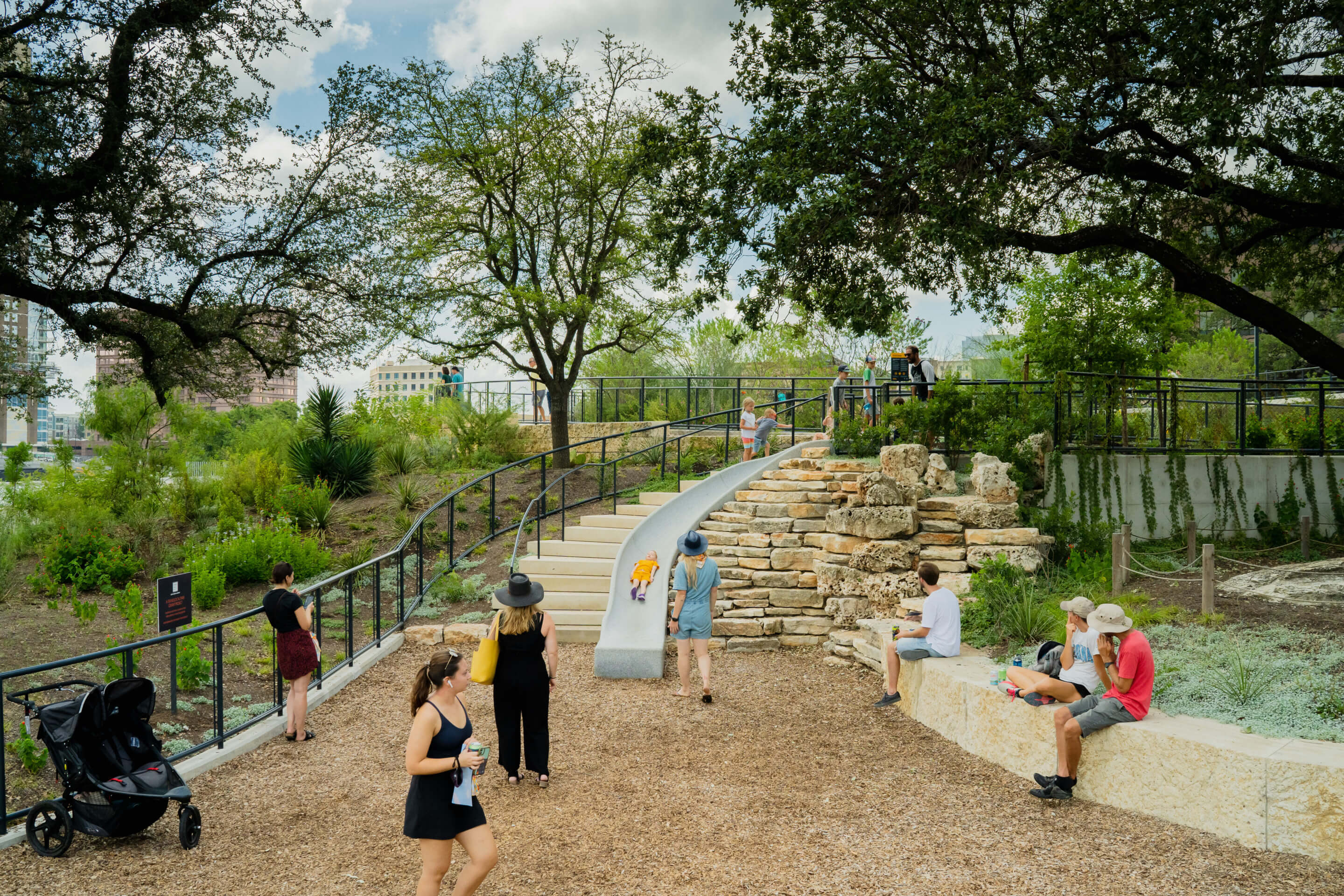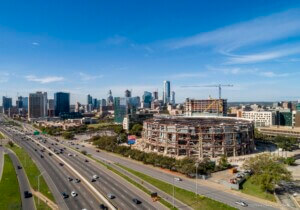The cost of living at Austin is extraordinarily high. —Frederick Law Olmsted
In the patois of the Old West, the peoples of Texas and the Great Plains were known as “flatlanders,” distinguishing them from the “hillbillies” from whom many of them descended. While the epithet is certainly reductive, it’s easy to catch the impression in today’s Texas that the surrounds are very flat indeed. The freeway system flattens out what topographical vagaries do exist into one smooth ribbon of concrete, and the suburban subdivisions where most Texans live sprawl across prairies that have themselves been leveled by bulldozers. For that reason, Austin’s newly opened Waterloo Park is a revelation. It provides a multilayered, multilevel experience for locals more accustomed to squinting at the distant horizon.

Designed by Michael Van Valkenburgh Associates (MVVA), with help from local landscape practice dwg., and including an ethereal canopy by Thomas Phifer and Partners, as well as a charming bathroom facility by Michael Hsu Office of Architecture, the 11-acre park is the most significant public green space to open in the state since Dallas’s freeway-capping Klyde Warren Park in 2012. Austin is known for its extensive network of greenbelts, which trace creeks, rivers, and lakes, and Waterloo Park is part of this network. It is the first phase of a redesign and restoration of a 1.5-mile stretch of Waller Creek, from 15th Street to where it empties into Lady Bird Lake.
Most of the city’s park and greenbelt acreage stands out for its informality, which, from a certain point of view, could be seen as neglect. Pathways of asphalt, gravel, or just mud and rock wend through clumped vegetation, local and invasive species growing side by side. Wide open fields, regularly mowed, are surrounded by shade trees and ring roads. Throngs of cyclists, joggers, walkers, swimmers, kayakers, dog walkers, sunbathers, pot smokers, and frisbee players intermingle with the city’s growing population of the unhoused (whose encampments are receding deeper into the brush since voters overturned a public camping ordinance earlier this year).

(Courtesy Waterloo Greenway Conservancy)
In contrast to this casualness, Waterloo Park is a highly designed, highly choreographed space built around a major piece of infrastructure: the mouth of a just-completed mile-long tunnel that diverts stormwater away from downtown and draws water back upstream to keep this section of the creek flowing through the dry months. MVVA took water flow as inspiration, laying out the park’s major program elements—amphitheater, bandshell, playground, native vegetation garden—in a series of colliding whorls. The real excitement, however, does not come so much from the plan as from the section. From Trinity Street, the park slopes down to the creek, which cuts a narrow trench through downtown crisscrossed by bridges. The design offers several different paths to negotiate this grade change, each revealing fresh and stimulating views. Visitors can climb a series of broad, low steps to stand beneath the tenderized modernism of Phifer’s canopy and look down across the stage and amphitheater that cantilever over the creek. A curving, elevated walkway from the southwest corner to the center of the park offers ADA accessibility and another perch from which to take in a panorama of the burgeoning city, where cranes are erecting towers without cease.
The approach from Red River Street crosses the Farmer Bridge—where, looking upstream, you can see the reconstructed banks of the creek and, downstream, the yawning gullet of the diversion tunnel—then leads up to the amphitheater and a view of the Capitol building’s pink granite dome peeking out from beneath the cloudlike canopy. Several mature live oak trees, some of them moved into location from other nearby development sites, extend their broad evergreen boughs to provide shade and another layer of visual complexity and fascination. From the edge of the cantilevered amphitheater, you can watch the mechanical claw that pulls debris from the intake of the diversion tunnel, but you also have to look at the tunnel’s maintenance building, a charmless box that, though gussied up with a mural by Venezuelan artist Arturo Herrera, could really have used some greenery on its bare and expansive flat roof.

Waterloo Park must be commended for the way it reconstructs natural habitats—along the creek as well as in the native garden—while cozying up to its infrastructural element. It’s worth noting that the Waller Creek Conservancy, the nonprofit that directed the project, was formerly headed by Peter Mullan, a onetime executive vice president of Friends of the High Line. That project, while rightly praised for its interweaving of nature and infrastructure, has also been criticized as an intensifier of gentrification. Austin, a growing city caught up in its own affordability and housing crisis, should take a hard look at how its improvement projects affect its population, in order to avoid a similar fate to that of the New York park. Though it’s probably too late. The path that connects Waterloo Park to the Waller Creek Trail, which is next in line for restoration, is currently fenced off. There, beneath a bridge, someone, for the time being, has made a bed and hung clothes to dry on a tree branch. Wouldn’t it be nice if design also had a solution for restoring that life?
Waterloo Park
Landscape architect: Michael Van Valkenburgh Associates
Location: Austin, Texas
Local landscape architect: dwg.
Bridge design/structural engineering: Architectural Engineers Collaborative
Civil engineer: Big Red Dog, a division of WGI Geotechnical Engineer: Terracon
Precast pavers: Hanover Architectural Products
Brick pavers: Whitacre
Wood decking: Thermory
Edge restraint aluminum edging: Permaloc
Wood seating system: Vestre VIA
Light poles and meteor lighting: ULS Pole
Metal mesh railing: Carl Stahl
Trash, recycling, and compost receptacles: Landscape Forms
Aaron Seward is editor-in-chief of AN.










